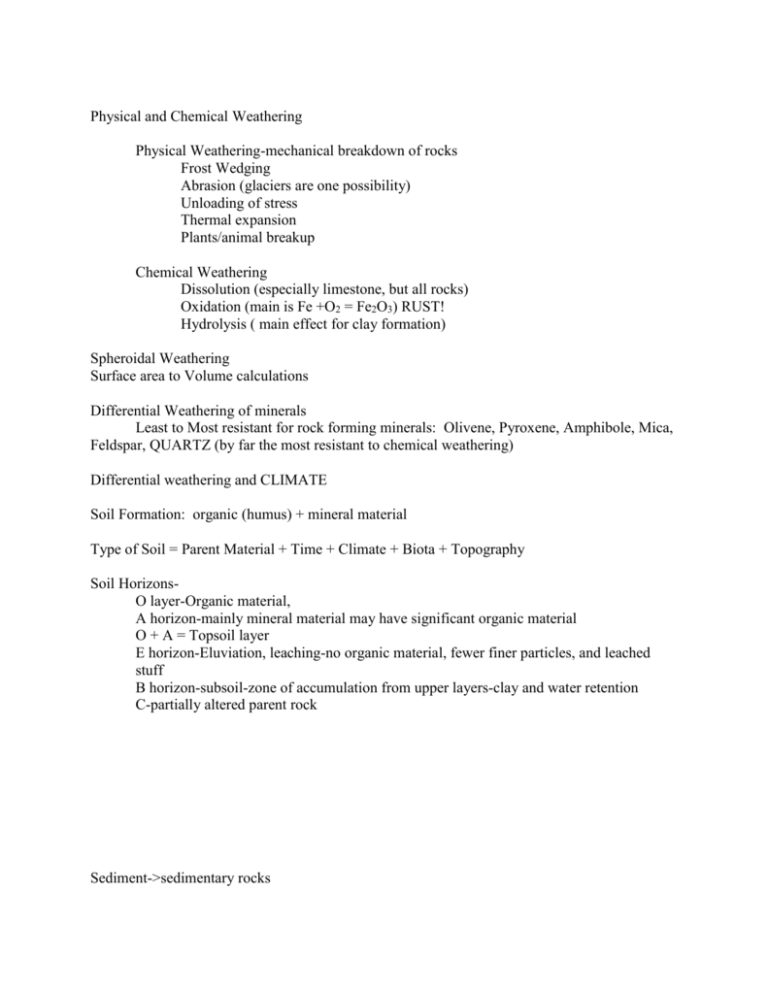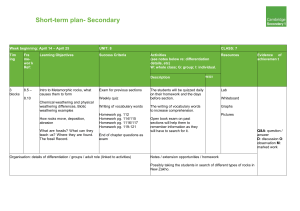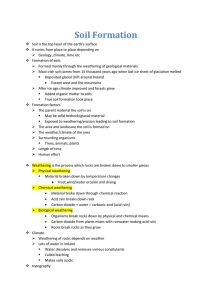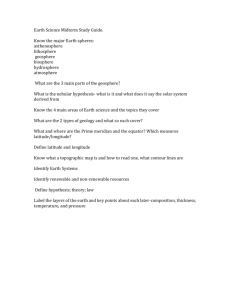Soil and Weathering - University of Hawaii at Hilo
advertisement

Physical and Chemical Weathering Physical Weathering-mechanical breakdown of rocks Frost Wedging Abrasion (glaciers are one possibility) Unloading of stress Thermal expansion Plants/animal breakup Chemical Weathering Dissolution (especially limestone, but all rocks) Oxidation (main is Fe +O2 = Fe2O3) RUST! Hydrolysis ( main effect for clay formation) Spheroidal Weathering Surface area to Volume calculations Differential Weathering of minerals Least to Most resistant for rock forming minerals: Olivene, Pyroxene, Amphibole, Mica, Feldspar, QUARTZ (by far the most resistant to chemical weathering) Differential weathering and CLIMATE Soil Formation: organic (humus) + mineral material Type of Soil = Parent Material + Time + Climate + Biota + Topography Soil HorizonsO layer-Organic material, A horizon-mainly mineral material may have significant organic material O + A = Topsoil layer E horizon-Eluviation, leaching-no organic material, fewer finer particles, and leached stuff B horizon-subsoil-zone of accumulation from upper layers-clay and water retention C-partially altered parent rock Sediment->sedimentary rocks Diagenesis and Lithification Compaction and Burial Cementation Detrital (clastic) sedimentary rocks GRAINSIZE and composition Smaller-- larger Shale-siltstone-sandstone-conglomerate (breccia) Chemical precipitates Limestone Gypsum Halite Chert (Coal) Peat/Lignite/Bituminous/Anthracite (lower to higher grade) with increase grade comes higher % C and lower % water and other stuff Mass Movements Slow-Fast Creep-Rockslides DRY WET Rockslide-Debris flow-Mudflow Factoring influencing slope failure Vegetation Water content of soil Removal of lateral support











